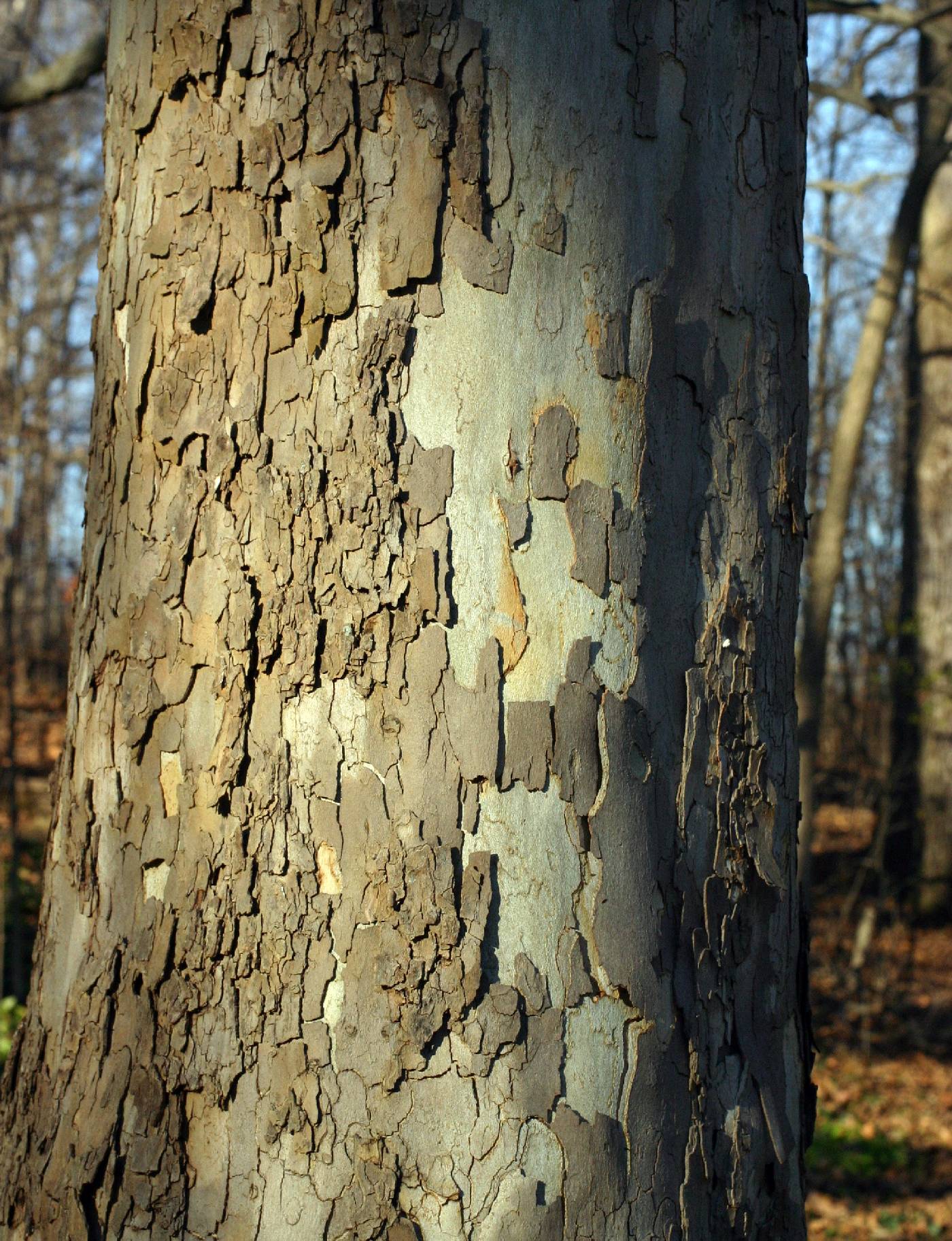|
Family: Platanaceae |
Leaves, twigs, and inflorescences densely invested with dendritic trichomes, at least when young; fragrance sometimes reminiscent of balsam poplars. Staminate flowers: sepals and petals 3-6+, petals nearly obsolete; pistillodes sometimes present; stamens as many as and opposite sepals, much exceeding tiny perianth, anthers subsessile, 4-sporangiate; dehiscence latrorse, the connective distally expanded into terminal, pubescent, peltate appendage. Pistillate flowers: sepals 3-4, petals absent; staminodes 3-4, prominent, club-shaped, tomentose; pistils 3-9, free; ovules 1(-2), pendulous, orthotropous; stigma 1, dark red, much elongate, conspicuous. Achenes falling with ring of subtending hairs attached. In North America Platanus is usually called sycamore, a name apparently borrowed from the European sycamore maple, Acer pseudoplatanus Linnaeus, which has similar leaves. That name in turn comes from the Middle Eastern sycomore fig, Ficus sycomorus Linnaeus, its specific epithet from the Greek sykomoros , mulberry.
PLANTS: Monoecious trees with branching hairs; bark peeling off in irregular sheets revealing a smooth surface. LEAVES: deciduous, alternate, simple palmately lobed or rarely merely toothed, palmately or rarely pinnately veined; stipules thin, sheathing, entire or lobed; petioles dilated at base and enclosing the axillary bud. INFLORESCENCE: dense, globose, unisexual heads, these solitary or arranged in racemes. FLOWERS: sepals 3-8, united or distinct, inconspicuous, scale-like, sometimes absent in staminate flowers; petals 3-6, minute, longer than sepals; petals of staminate flowers cuneiform-sulcate, scarious pointed; petals of pistillate flowers acute, sometimes absent; stamens as many as the sepals and opposite them; filaments very short to obsolete; staminodes in pistillate flowers 3-4; carpels (3-)5-8(-9), separate, l-loculed, in 2-3 whorls, surrounded by persistent hairs, ovaries superior; styles terminal, long, slender the stigmas along the inner face; ovules 1-2; rudimentary carpels sometimes present in staminate flowers. FRUITS: densely hairy achenes or small nutlets. SEEDS: elongate-oblong, pendulous. NOTES: one genus Platanus. REFERENCES: Laferriere, Joseph E. 1994 Platanaceae. J. Ariz. - Nev. Acad. Sci. Volume 27, 238. Characters of the family. Gleason, Henry A. & Cronquist, Arthur J. 1991. Manual of vascular plants of northeastern United States and adjacent Canada. lxxv + 910 pp. ©The New York Botanical Garden. All rights reserved. Used by permission. |


